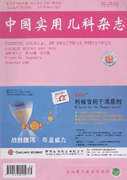To investigate the relationship between multidrug resistance gene 1(MDR1)C3435T and T1236T polymorphism and whole blood concentration of antiepileptic drug in epilepsy. Methods Blood samples were collected from 205 epilepsy patients,110 and 95 epilepsy patients respectively had been treated with valproic acid(VPA )and carbamazepine(CBZ) for more than 2 months to 8 years. Genotypes of the C3435T and C1236T polymorphism were determined by polymerase chain reaction(PCR)followed by restriction fragment length polymorphism (RFLP).VPA and CBZ concentrations were measured using a fluorescence polarization immunoassay。The patients were divided into 3 subgroups for every position:GG, GT, and TT in C3435T;CC,CT,and TT in C1236T. Results Of the patients who received VPA or CBZ, genotype frequency was CT > CC > TT in both C3435T and C1236T. The serum valproic acid concentrations of the patients with CT,CC and CT genotypes in C3435T were 4.17±1.99, 5.16±2.62 and 4.78±1.72 (mg/L), respectively, and there was no significant difference between the C3435T genotypes. The serum CBZ concentrations of the patients with CT,CC and CT genotypes in C3435T were 0.72±0.44,0.69±0.29 and 0.57±0.43 (mg/L),respectively, and there was no significant difference between the C3435T genotypes.The serum valproic acid concentrations of the patients with CT, CC and CT genotypes in C1236T were 3.73±1.48,5.35±2.61,5.71±2.40(mg/L),respectively.The serum CBZ concentrations of the patients with CT, CC and CT genotypes in C3435T were 0.98±0.44,0.78±0.13 and 0.71±0.33(mg/L),respectively,and there was no significant difference between the C1236T genotypes and the serum valproic acid(or CBZ) concentrations of the patients with CT, CC and CT genotypes in C1236T. Conclusion The MDR1 gene polymorphism is not correlated with the whole blood concentration of VPA or CBZ.

